The increased demand for residential real estate across Europe and the recent correction in property prices provide an attractive investment environment for real estate investors. In particular for institutional investors who are shifting their attention from commercial real estate to residential real estate investments.
This is why we are excited to back DoorFeed, a real estate technology company founded by serial entrepreneur, early UBER employee, and longtime Seedcamp Mentor James Kirimy. Ideally positioned to support the industry through the current transition, the platform builds and manages customized portfolios of apartments, houses, and buildings.

DoorFeed leverages its full-stack servicing platform with a suite of integrated software dedicated to investment managers and their ecosystem (e.g., tenants, builders, solicitors, accountants, auditors) and a network of hundreds of local operating partners who work on-demand throughout the entire investment lifecycle – from due diligence to renovation and the day-to-day management of tenants and properties. The platform analyzes thousands of sources in real-time, uncovering 100,000 opportunities every day in the European residential sector. It then creates tailored portfolios of properties for institutional investors, handling everything from acquiring and renovating to managing their assets.
Earlier this year DoorFeed supported the launch of the first French Private Equity fund specializing in single-family residential properties. Building on this significant milestone, the company aims to advance its platform capabilities, grow its operations in France, and prepare its expansion across Europe.
James Kirimy, founder and CEO of DoorFeed, highlights:
“We’re on a mission to institutionalize the residential market across Europe by making it as easy to buy properties as it is to buy stocks to investment managers. We are focused on creating market-beating strategies with our clients and playing a leading role in addressing the housing crisis. The US market has been leading the way and investors are now looking to penetrate Europe.“
On our investment in DoorFeed, our Partner Sia Houchangnia comments:
“We have known James for over a decade and have always been impressed by his strong capabilities as an operator. The DoorFeed journey so far only highlights this further. James and his team have built a unique, full-stack platform that is revolutionizing the way institutional capital is deployed in the European real estate market. We are excited to continue supporting DoorFeed and to witness the strong momentum they are now gaining.“
We are excited to participate in DoorFeed’s €12 million Seed funding alongside Motive Venture and Stride. With the funding, the company plans to accelerate its growth to become the leading partner for institutional investors looking to deploy capital in the residential real estate market in its core French market and to prepare for its expansion across Europe.
For more information, visit doorfeed.com.
Our Talent Manager James Wright spoke with Brett Putter, CEO of CultureGene about the role culture plays in today’s work environment, especially when it comes to hybrid and fully remote teams.
At CultureGene, Brett and his team help companies develop effective hybrid, remote-first, or remote companies. They have developed different tools and different programs to help companies depending on the size and scale of the business. Typically, they work with companies that are growing rapidly and need to stabilise their DNA and the foundation so that growth is built on solid foundations.
Watch the video or read the Q&A below!
James: There is no clear consensus on whether fully-remote, hybrid, or office-based cultures are best. What are the major benefits or drawbacks of these options from your perspective?
Brett: There are a number of elements to consider here. If you’re intentional about building the remote capability inside your company you can see how well it can go. Take companies like remote.com who scaled from a startup to over 1000 employees in four years in 60 countries. They are doing it well. Gitlab also went from 100 people in 2016 to 1800 now. So you can see remote first businesses can do it very well. But like anything, there are benefits and drawbacks. The benefits are that you have access to a wider talent pool, you can hire and find the best employees from anywhere. Some companies are saving money on office space and scaling quicker because of that. Studies have also shown that remote and hybrid employees are happier and they’re also more productive.
On the other hand, if you are not intentional about building a remote working capability, you can see many issues arise. Communication and collaboration challenges are common challenges. Cultural challenges can grow and the leadership often struggle to maintain high performance as a result. It can also be hard to track employee performance for remote or hybrid teams.
With an office environment, leaders know how to lead in this environment. We’ve done it before and we are designed as humans for synchronous communication, so it is naturally easier to collaborate. It’s easier to develop a company’s culture and it often happens by default. You also typically find it is easier to manage performance too. But the drawbacks are limited access to talent, often higher costs, and a general decrease in employee flexibility. This last one is the biggest threat to companies as employees want flexibility and autonomy.
So there is no easy answer and no silver bullet.
James: Frequently founders of remote companies realise they have performance problems, but struggle to identify where they originate from. How do you go about identifying the bottlenecks in a business that is fully remote? And then, how do you fix them?
Brett: Bottlenecks are happening ultimately because of remote work friction. And this happens because most remote companies operate like they would in an office environment. They aren’t being intentional about building a remote work capability.
The bottlenecks usually originate from collaboration and people management. When it comes to collaboration, if you aren’t defining your key processes then new employees have to work it out themselves. If you aren’t being deliberate about developing and documenting processes a lot of time is wasted either by the employee asking others in the business for help or taking more time figuring it out themselves.
If you aren’t balancing synchronous and asynchronous communication and working out what you should do when, and building rules and structure around this, then that is where the friction happens. If you aren’t being deliberate about building social capital and social connection as your business scales, then people lose connection, contact, and trust over time.
Remote work companies manage and lead differently, they are outcomes-based rather than input-based. To your point around performance, they have a way of ensuring that you know who’s performing even at a micro level. So it’s on the manager to be on top of performance so this can then be fed up to the leadership.
James: A lot comes down to the people you hire in a business, and different work environments need different people. Have you seen a typical leadership persona that works well in a remote-first business?
Brett: There is some research on this, Georgia Southern University did a study before the pandemic. They had 220 teams of 4 people. 110 worked remotely and 110 worked in an office. All the teams had to choose their leaders at the end of the project.
Those who had been in an office environment had leaders with the following characteristics: charisma, hierarchical, verbal, and delegators. Whereas those that had been remote had leaders with the following characteristics: coach, mentors, facilitators, project managers.
This is the crux of some of the leadership challenges that are happening right now, leaders who are strong in an office environment aren’t necessarily strong in a remote environment.
Ultimately, a lot of companies quickly pivoted from in-office to remote first during Covid, without changing the leadership team and it’s something we help our clients with, in changing the style of management in the organisation which is needed for high performance.
James: To monitor and track performance in a remote business, many default to micromanagement, which is never liked by employees. How can you avoid micromanagement in a high-performance, remote-first environment?
Brett: Micromanagement is very destructive. It’s bad in an office environment but even worse in a remote operation. They are either going to waste a lot of time showing you proof of work, or they will lie.
What I’ve seen is remote work companies use is an idea by Andy Grove who came up with a concept called task-relevant maturity. It’s the idea of how capable the individual is of doing the set of tasks they have to complete. As a remote manager, you can evaluate if a team member has completed those tasks before and what they might need support with. Essentially this is a powerful tool that allows you as a manager to get ahead of the bottlenecks before they happen. It’s a slightly different way of leading but I’ve seen it used extensively in remote companies.
James: It’s certainly easier to introduce these processes when you incorporate your company as a remote-first business from day 1, but when you’ve transitioned from in-office to remote, how do you go about transitioning your style of working without suffering major brain-drain from resignations and poor performance?
Brett: Typically if you were in the office before the pandemic and then you’ve decided to go hybrid or remote, the thing that we don’t fully grasp or appreciate is the extent to which the office helped us with our culture development. The office gives us physical proximity and learning by observation. When you’re in an office space you almost don’t need to be that intentional about your culture. You can catch up when it’s 50 or 100 people and start being more deliberate. If you leave that environment it can often feel that your culture has been obliterated.
Even in a hybrid environment, the office is not as effective as it was. So as a leader, you need to understand what you’ve lost and how to make up for it. So one example is losing the ease of collaboration in the office. That might mean being more intentional about key processes, making sure everyone is aware, and keeping those processes up to date.
James: Flipping the direction of the conversation a little, we’re seeing more and more of our portfolio head back into an office environment, or at least having more days in the office. How would you recommend managing that process?
Brett: When you say ‘some of the team’ want to be in the office, usually this is the leadership team that wants to be in the office and they are ultimately the ones driving this initiative. If they are, that is fine. However, you have to accept that some people are going to disengage as a result. There are some people who are now no longer willing to spend an hour travelling to the office every day. Ian Goodfellow was the Chief of ML at Apple. In 2022 Apple went from Remote to Office again and he resigned as a result. If a company like Apple can’t keep their best people in that transition nobody can. Ian went to DeepMind who had a more flexible work arrangement for him.
James: Different teams typically have different openness to office working. For example, engineering teams typically favour working from home and sales teams generally prefer office-based environments. Can companies create different rules for different functions in their businesses?
Brett: I’ve seen companies do this. It’s viable if you manage it properly. I believe that if you have a hybrid or remote first mindset then you can have people in the office and people at home without issue. It just requires a lot of thought around how you ensure information isn’t lost when some are in the office and others are at home. As long as everyone understands those processes to mitigate this then it can work.
This conversation has been edited for length and clarity.
The average enterprise uses hundreds of SaaS applications. When a company is considering purchasing new software, ease of integration with the existing stack is top of mind. Building integrations is also a priority for both developer teams and sales teams at every SaaS vendor.
This is why we are excited to back Integration.app, an AI-powered integration stack for SaaS products that aims to be the catalyst for deeper connectivity across the SaaS ecosystem. The platform provides a single flow to integrate with every external application, thus freeing developers from having to build the same integration scenario over and over again.
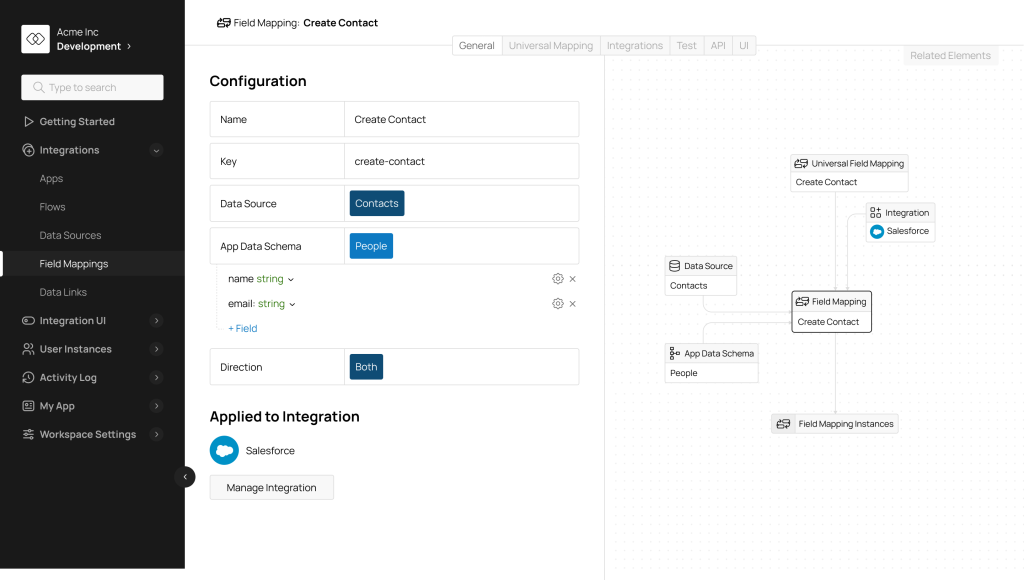
Founder and CEO Daniil Bratchenko, previously an early engineering leader at DataRobot, a leading AI automation platform, has experienced first-hand the challenges of software integrations, while he helped grow the company from 20 people to over 1,000.
“At DataRobot, I saw first-hand how much customers value well-integrated software, and how important integrations are in purchasing decisions. At the same time, I have seen how challenging it can be for developers to build strong integrations at scale. It is my mission, and Integration.app’s mission, to solve this problem for developers once and for all”.
Integration.app’s Universal Integrations architecture aims to revolutionise the integrations category by removing the trade-off between time-to-implementation and customizability. Product and engineering teams in software companies can use Integration.app’s suite of APIs, SDKs, and UI components to build customer-facing integrations with multiple apps in one go, while maintaining the look and feel of their application.
The company’s platform leverages emerging capabilities of Large Language Models to create a “one-to-many” paradigm, whereby developers can configure one integration scenario (e.g. import customer data from any app). Integration.app will intelligently map APIs and UIs across multiple applications to generate dozens of integrations at once, speeding time to production by up to 3-6 months. This empowers developers to focus on building core features, rather than spending hours reading API documentation and building repetitive integrations.
The platform is already being used by a wide range of B2B SaaS companies, from early-stage startups to large businesses such as Airmeet. Airmeet, a leading virtual events platform, saved budget and engineering time by using Integration.app to scale their portfolio of integrations with Sales and Marketing Automation tools.
“As we were looking to build out our next batch of CRM integrations, we discovered that Integration.app had a unique solution compared to unified API platforms or embedded iPaaS offerings. They are an API-first and developer-first solution, with a flexible and customizable framework that features the right amount of abstractions to build on top of. We managed to build out integrations with Salesforce Pardot, Pipedrive, ActiveCampaign, and Keap in a matter of weeks, which gave us time back to focus on our core features” said Raghav Takkar, Principal Product Manager at Airmeet.
SaaS vendors that use Integration.app save time and money on building integrations while shortening sales cycles from prospective customers who request specific integrations to the applications they need.
CEO Bratchenko emphasizes:
“5 years from now, integrations will become a commodity. AI will make it simple and free for a developer of a business application to connect with every other application their customers use. Think of how easily it is for smartphone apps to consume and send data across each other. This should be the same for business apps. Integration.app will provide this deep connectivity layer and pave the way to this future for the next generation of SaaS companies.”
On why we invested, our Principal Felix Martinez comments:
“Integration.app is harnessing AI to create a new type of platform for integrations, harmonising the balance between being customisable and user-friendly – a choice that has traditionally challenged developers in creating native integrations. In a world in which deep integrations become table stakes for all SaaS companies, Integration.app can become the connective tissue which binds business applications into a cohesive ecosystem. ”
We are excited to participate in Integration.app’s $3.5 million Seed funding round led by our friends at Crew Capital, alongside Cortical Ventures, Accel Starters, DataRobot founders (Jeremy Achin, Tom de Godoy), and UiPath executives.
The new capital will be used to accelerate the company’s mission of enabling SaaS apps to work seamlessly with each other. Integration.app will continue to expand upon its existing portfolio of hundreds of connectors with a breakthrough new product that leverages AI to enable developers to build their own custom connector for any application with a documented API.
You can learn about Integration.app and sign up through the website. Feel free to send a message to hello@integration.app if you’re interested to learn more.
At Seedcamp we first invested in machine learning as part of Fund II in 2012, when artificial intelligence was mostly confined to academia. Our earliest investments were James Finance and Elliptic, which recently raised a Series C to continue powering financial crime detection. AI fundraising activity gathered momentum in the lifetime of Fund III. We are deploying Fund VI, which we launched in May this year,
We are now deploying Fund VI, which we launched in May this year, and are particularly excited about startups building AI-driven solutions across industries and verticals. Our most recent commitments include the AI governance platform EnzAI and AI-powered automation software AskUI.
Accelerated by rapid innovations in Generative AI, the AI space has reached blistering speeds and represents 18% of all investment in the venture industry.

This article walks through some of the micro-themes that bind the 70 commitments Seedcamp has made to date in AI and ML.
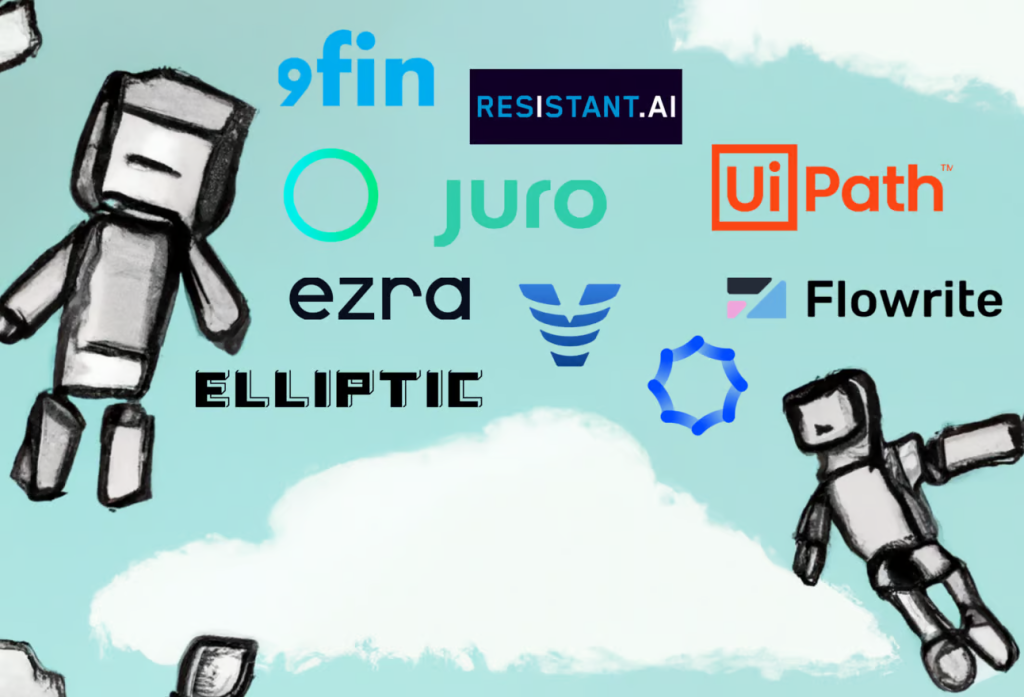
Large language model are the first AI tools capable of doing work that would otherwise have been done by humans. Sarah Tavel of Benchmark has written a great article about this point of inflection. Where software could only previously enhance the efficiency of work, it can now literally do or generate it.
Seedcamp has invested in Metaview which writes interview notes, Flowrite which can write emails and messages across Google Chrome, and Synthesia which automates video production and recently achieved unicorn status.
Users can enter text to Synthesia, choose an avatar trained on actors, and generate videos

Users can enter text to Synthesia, choose an avatar trained on actors, and generate videos
The concept of software that does work is already catalysing a wave of startups and new business models and philosophies for the enterprise.
How should we re-calibrate ‘productivity’, if it is a function of infinitely re-produceable software?
Where ‘time’ was the denominator of the traditional productivity equation, [productivity = rate of output/rate of input], is the correct denominator now GPU?
If in the future humans are just responsible for validating model accuracy and precision, then the real opportunity is to find the ‘fast moving water’ (as coined by NfX), where AI is capable of the biggest volume of work.
Within this early wave of LLM applications that do work, a pattern is emerging of companies focused on automating time-consuming, high-complexity activities that are conducted in written natural language. Procurement RFPs, compliance questionnaires, legal documents, and code generation are all obvious early use cases. Companies that can translate the description of a problem in these areas to sound and reliable output are likely to capture value.
The lion’s share of enterprise AI applications in the last decade have focused on employee efficiency. The most remarkable innovations have been horizontal software that tackle ‘hard and boring’ problems such as process mining, application automation, and project management to give employees more time to do more work.
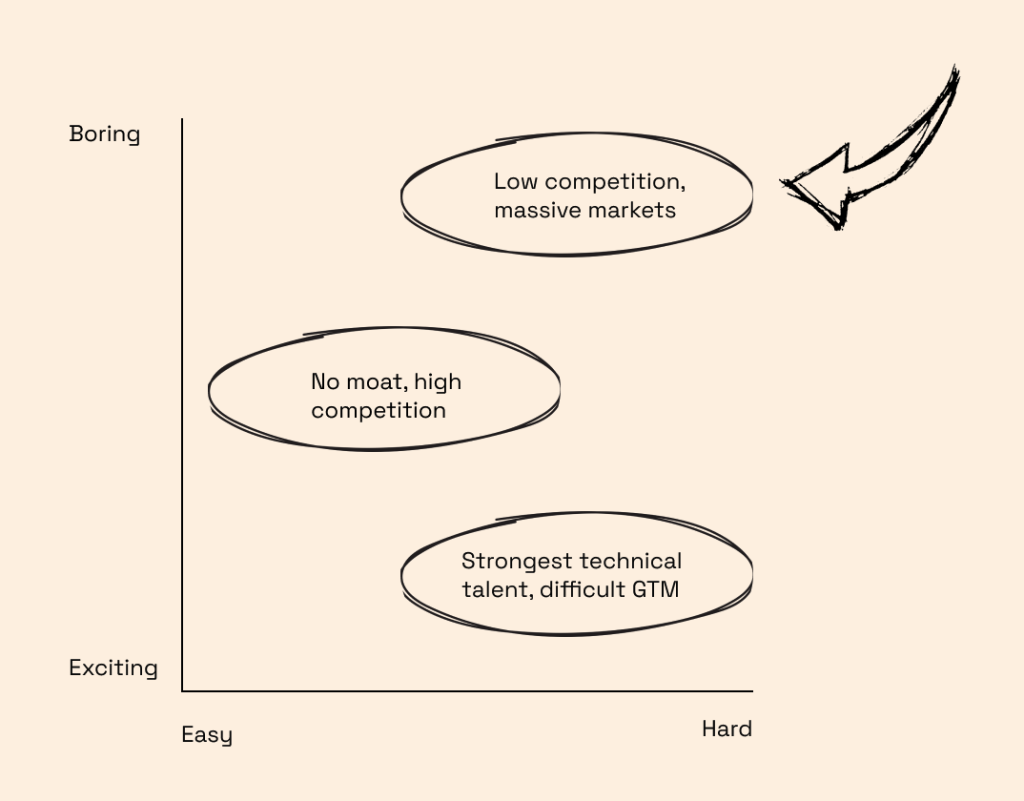
UiPath (NYSE: PATH) is a category leader in the enterprise work stack after going public in 2021. The company helps businesses automate and improve high volume and low complexity tasks within the enterprise and recently acquired communications automation platform, re:infer, also Seedcamp-backed. We have also invested in AI businesses automating other corners of the enterprise such as Rossum, a document gateway for business communication, Juro, a contract collaboration platform, and tl;dv, which records meetings and helps you tag important moments on the fly.
Newer robotic process automation products and features increasingly include ‘self-compounding’ elements that use previous activities to prioritise future activities based on ROI and other key metrics.
In the longer-run, there may be a significant difference between apps that ‘do work’ and more general efficiency-enhancing enterprise software. AI businesses in the former category may use models trained on sector specific data, which are necessarily vertical software (a co-pilot for every industry). In the latter category, the market opportunity includes all business with processes, for which broader approaches may be more relevant. Vertical or sector-specific winners can of course still be massive businesses, and may capture 60%+ market share whereas horizontal winners rarely get more than 15%.
‘MLOps’ has become a nebulous branch of the AI taxonomy but remains the best way to describe companies that enable the running, maintaining, analysing and fine-tuning of AI models.
MLOps has several layers that are each prerequisites for model development; the GPU layer, the data layer, the observability layer, etc. Companies typically have an insertion point that tackles one of these and move on to add features that target several at once where there are obvious adjacencies. MLOps companies are the ‘picks and shovels’ of artificial intelligence.
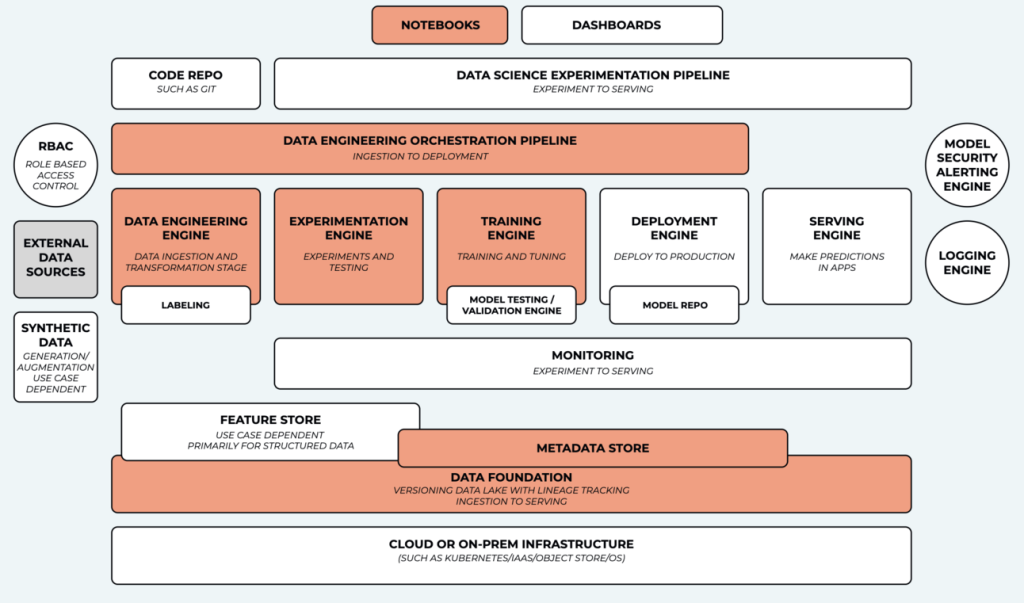
Pachyderm’s products serve customers across several uses case within model production
In our portfolio, Embedd.it parses data from ML datasheets to generate drivers for semiconductors and Fluidstack aggregates spare capacity in datacenters to rent out to customers.
The speed of developer adoption of MLOps tools highlights that demand may be outstripping supply in this category. For example, at the data layer, there is still plenty of white space for AI-native tooling for observability, integration and transformation, and the race to build tools to debug and increase performance of models is red hot.
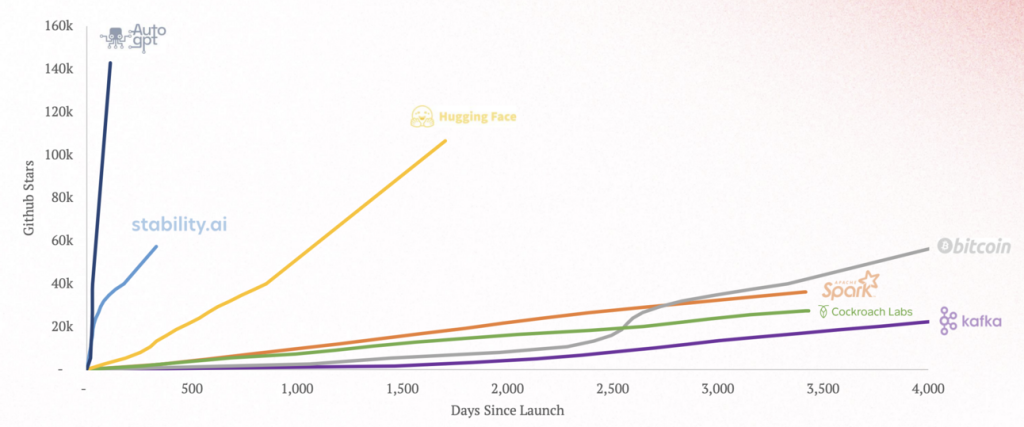
Redpoint Infrared Report (2023)
Propping up the MLOps ecosystem is a cluster of software trying to prevent the general misuse of AI. If generative AI is an open-road race, the guardrails are the police, the red lines, the car bumpers, the rolling barrier and the orange cones. The guardrails entail a broad set of companies spanning from cybersecurity – Resistant.ai protects AI-native systems from complex fraud and sophisticated machine learning attacks through to governance; Enz.ai helps organisations adopt policies to build and deploy AI and track their practices against them.

DALLE’s best impression of AI guardrails
Guardrails are plausible at many insertion points within a model pipeline. Software that ensures only the right company data is sucked into in an open-source model, software that sits on top of a model to ensure brand alignment and software that generally ‘troubleshoots’ the software supply chain in complex cloud environments, such as RunWhen.
Tools of this nature are increasingly integrated into infrastructure rather than at the application level. They have ‘shifted left’ chronologically. This enables companies to ensure compliance and security across the entire model production sequence. Although this approach often has a higher rate of false-positives, since checks occur prior to project completion, there is scope for reinforcement learning layers to drive a smoother workflow and categorise issues as they are flagged.
The hardest category to succinctly compartmentalise is the tooling layer that helps developers integrate models. These aren’t a feature of model ‘building’ but rather how developers within enterprises can best select and use these models.
These tools are often modular and focus on how models interface with the enterprise and with the end-user. Deployment channels will be especially relevant for industries with fewer software developers to conduct bespoke model integrations. Companies in the Russell 3000 might well be thinking about how to do this effectively.

Goldman Sachs (2023)
This is one of the spaces that is moving incredibly quickly in the current LLM wave as the answers to many questions are yet to emerge.
At Seedcamp, we have invested in several early-stage businesses in this space. Dust is a platform for creating sophisticated processes based on large language models and semantic search. AskUi is a prompt-to-automation platform that understands applications and helps users build UI workflows that run on every platform. Kern.ai helps companies connect external models to a internal data in a secure fashion.
Finally, there are the predictive applications of ‘old-school’ AI; much less a la mode. This type of business typically detects unknown unknowns, such as suspicious trading patterns, but can also detect known unknowns earlier in a workflow, which is often the case in a medical setting.
Despite the heady excitement around generative AI, predictive AI still has a lot of room to improve its own value proposition. For example, intelligent AML, KYC, and transaction monitoring technologies are still trying to crack financial crime and scams. The amount of risky and illicit crypto flowing into financial platforms is still in the hundreds of billions despite trending downwards YoY and represents 2-3% of all inflows.
At Seedcamp, we have focused on healthcare and fintech in this space to-date. In healthcare, we are investors in Ezra, an early cancer detection technology that combines advanced medical imaging technology with AI, and viz.ai, which alerts care teams to coordinate care, connect professionals to specialists and facilitate communication. In fintech, we are investors in 9fin, a platform for financial institutions to leverage analytics and intelligence and Elliptic.
Other interesting areas in this space might include agriculture, manufacturing and logistics. There has been compelling innovation but it has largely been confined to incumbents like Siemens and John Deere. John Deere spent $1.9bn on R&D in 2022, or 4% of revenue. That wouldn’t be much for a pharmaceutical company but its a hell of a lot for a heavy machinery business.
One reason that AI is so exciting is that it continuously forces investors to reconsider what they believe. Seedcamp’s first AI/ML commitment in 2012, James Finance, built fintech infrastructure to determine customer eligibility. In Europe, Lendable and Funding Circle became breakout companies in this space, but AI advancements didn’t propel a large group of winners in the intervening period and investor theses about the space decayed.
With each evolution of AI technology, the category has changed and in 2021 and 2022, predictive fintechs like Marshmallow reached significant scale with technology that determines customer eligibility. Investor sentiment pivoted again✝.
At Seedcamp, we are optimistic about the way AI upends sectors and we are always interested in new solutions at every interval of the software value chain.
We are especially excited about entrepreneurs with a differentiated perspective on the future. That might be that every company will operate myriad small open-source models via a routing layer, that the entire data pipeline needs to be rebuilt or that federated learning between farms will unlock a new wave of agricultural prosperity. It might even be that language models are a flash in the pan until they are in the hands of humanoid robot butlers, doctors, and waiters.
Whatever it is, we would love to hear it, so please get in touch!
✝Funding Circle, Lendable, and Marshmallow are not Seedcamp companies.
Copyright © 2019 Seedcamp
Website design × Point Studio